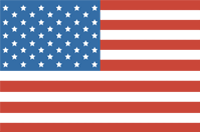The first official portrait of the King was unveiled this week, and reactions have fallen within the usual range: it’s great, or it’s satanic, or it’s actually all about racism. Depicting public figures has always been a risky business. Graham Sutherland’s portrait of Winston Churchill was hidden from view and burned. Horatio Greenough’s statue of George Washington got up as a scantily clad Olympian deity was thought ludicrous. And Saied Dai’s official portrait of Theresa May was grudgingly accepted as a triumph.
People are happy to debate a royal portrait’s merit, but few would question why it was commissioned in the first place. Monarchs have their portraits painted: it goes with the territory. In painting Charles III, artist Jonathan Yeo joins a tradition of Caroline portraiture stretching back to Anthony van Dyck’s 1638-9 portrayal of Charles I. Yet he does so at a strange time.
The days when monarchs could rely on coinage, statuary and paintings to curate their image are long gone. Photography, television and the smartphone have seen to that. An age in which we can make and edit pictures with ever-increasing ease has also, coincidentally or not, seen the death of deference. And so memes about the royal hands are ubiquitous, the depiction of Charles in The Simpsons has enjoyed a long cultural afterlife, and Netflix dramas speculate about his youthful amours. Given that a king has never had less control over how he is seen, some might wonder why a monarch in 2024 would bother to have his portrait painted in the first place.
After all, what can a mere portrait do against such fearful odds? Quite a lot, it seems. X is teeming with hot takes. Art historians are being invited onto TalkTV. Not to be outdone, the New York Times has run multiple pieces about an oil painting of a foreign country’s head of state. Yeo’s painting must have been seen by more people in the 24 hours since it was unveiled than van Dyck’s was in the first decade of its existence. Cameras are supposed to have superseded pigment and turps, yet the cultural heft of a new royal portrait seems weightier than ever.
Much of the coverage focuses on the painting’s supposed edginess. It’s true that the picture is very red. It’s also true that van Dyck would be mystified by the composition, where the King’s head and hands float above a leaf litter of reds, oranges and indigos. But in other respects the conventions of royal portraiture are adhered to. Charles is uniformed as Regimental Colonel of the Welsh Guards, and although the torso is an impressionistic sketch, the eye is still drawn to the regal gongs studding his tunic. Van Dyck chose to paint Charles I on horseback; at the King’s suggestion, Yeo added a monarch butterfly as a mawkish symbol of transformation.
Nevertheless, the portrait’s real lure has little to do with its aesthetic value. It fascinates because it shows us what we cannot have. The barrier to entry for a professional portrait is significant, and money is not the only problem. We accept that a king or prime minister or celebrated poet will have their portrait painted, and in our heart of hearts we know that having a portrait painted of ourselves would not be the same thing at all. The kind of public portraiture embodied by Yeo’s picture is the last redoubt of true exclusivity, accessible only through accident of birth (royals), luck (prime ministers), or genius (celebrated poets).

 Main Edition
Main Edition US
US FR
FR






Join the discussion
Join like minded readers that support our journalism by becoming a paid subscriber
To join the discussion in the comments, become a paid subscriber.
Join like minded readers that support our journalism, read unlimited articles and enjoy other subscriber-only benefits.
SubscribeIt’s good
‘He is Vigo, and you are like the buzzing of flies to him!’
I personally feel that the portrait is powerful and yet artistically sensitive. A great work of portraiture.
while I love the painting (minus the ridiculous butterfly) I’m not sure it’s what is best for an official royal portrait.
It’s devoid of any merit.
The portrait or the subject?
Both.
The head separated from the body (the complete clash of styles in this case) does of course have a historical precedent …
I completed a painting of the scots grays charge for a friend he tells me Adam they that he and his wife see the face of Jesus in the middle of the ranks he’s tried to point it out to me …I can’t see it in any wichway and I painted it no doubt somebody can come up with the hidden meaning cos I bloody can’t oh dear won’t sleep now.
.
“We accept that a king or prime minister or celebrated poet will have their portrait painted, and in our heart of hearts we know that having a portrait painted of ourselves would not be the same thing at all.”
Umm… You’re waaayyyy over-thinking this. Or, maybe I just didn’t get the joke.
Absolutely. And as we know the camera lies.
All those disappointed Just Stop Oil protestors returning cans of tomato soup for a refund, as they have been beaten to it.
Just went to a gallery opening last night (husband was the third place winner). Opinions always vary widely on art: what it is can’t even be defined.
When the king’s father died, I did a respectful portrait of him in grey watercolor washes. Happy with it. When Her Majesty died, I did one in color. Thought it was gloomy and threw it away.
This portrait of Charles is, as the author suggests, is an attempt to break through the noise of today’s cultural life, and he bl**dy did it, brilliantly.
It looks like his face is emerging from a tub of pomegranate juice.
Oh, I just realized what it reminds me of: all those scenes in the movies where someone (Gollum, the Terminator, whoever) falls into a molten pool, and the last thing to vanish is their face. Alas.
The use of red over most of the canvas effectively minimises, if not erases, the King’s uniform.
Or is the King in Hell?
Not yet.
Following on from Eurovision and countless other demonic displays recently one can only conclude the satanists are not even bothering to hide it anymore.
I like it.
I like the tradition of royal (and presidential) portraits. I don’t like the tradition of artists drawing attention to themselves with “edginess,” rather than distilling and capturing their subject with as little distraction as possible.
Like a bad Bacon rising from the Inferno…
I was expecting the article to be longer, it was a bit anticlimactic. My feelings about the portrait are that I really liked the face but could have done without the rest of it, which, apparently, is what the artist thought……….. “screw this I’m only good at faces”.